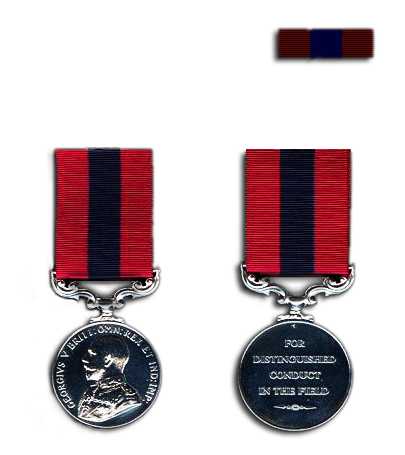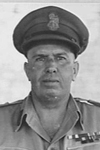Distinguished Conduct Medal (DCM)
This decoration was instituted by Queen Victoria on December 4th, 1854, during the Crimean War, as a means of recognition of acts of gallantry in action performed by Warrant-officers, non-commissioned officers and men. The decoration was recommended by the Commander-in-Chief and the D.C.M. was the second highest award for gallantry in action, after the Victoria Cross, for all ranks below commissioned officers. Recipients may add the letters DCM to their name.
Acting upon the fear during the First World War that the overwhelming demand for medals would devalue the prestige of those already issued, the Military Medal was instituted as an alternative to the D.C.M. from March 1916. Although the D.C.M. remained available, the lesser Military Medal was usually awarded from this date and the D.C.M. was reserved for exceptional acts of bravery. Bars bearing the date of subsequent acts of gallantry may be awarded.
The silver coloured award has a diameter of 36 mm, and the obverse shows the head of the reigning monarch. The reverse shows the legend ‘For Distinguished Conduct in the Field’ with the rank, initials, surname and unit of the recipient engraved on it. In some cases, the date of the action for which the DCM was awarded is engraved too.
In 1993 the Distinguished Conduct Medal was replaced by the Conspicuous Gallantry Cross. Conferment of the award was announced in the London Gazette accompanied by a citation.
The crimson ribbon is 1.25 inches wide with a vertical dark blue central stripe (0,375 inches).

























